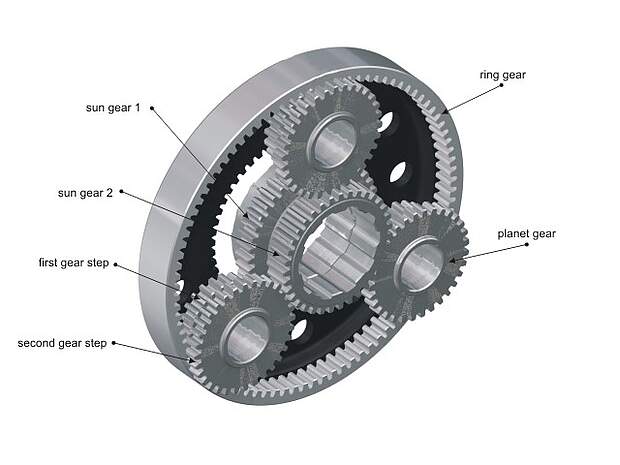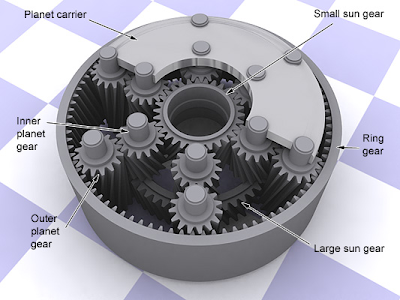Product Description
ISO/TS16949 OEM gear
| Product Name | pump rotor& Stator, gear |
| Material | iron powder/Stainless steel/Cooper/Nickel |
| Technology | Sintering – Powder Metallurgy |
| Certificate | ISO9001/TS16949 |
| Process Flow | Powder mixing – Forming – Sintering – Oil impregnation – Sizing -Ultrasonic cleaning – Steam oxidation – Oil impregnation – Final inspection – Packing |
| Surface Treatment | High frequency quenching, oil impregnation |
| Apperance | No crumbling, cracks, exfoliation, voids, metal pitting and other defects |
| Application | Industry,Vehicle, Power Tools, Motor, Bicycle, Electrombi |
Why Powdered Metals?
Significant cost savings.
Create complex or unique shapes.
No or minimal waste during production.
High quality finished products.
Strength of materials
Certification
A trained, qualified, and dedicated work force
- Engineering is our strength – we will help your designers convert your parts to cost-effective powdered metal parts.
- Every employee is trained to a standard of excellence.
Quality is designed into the process
- Consistent and committed attitude to quality first.
Critical characteristics are measured and controlled using the latest statistical methods
- Quality is always the first priority.
- Our subcontractors are held to the same high standards.
Company Profile
JINGSHI established in 2007
Manufacturer & Exporter
Exacting in producing powder metallurgy gears and parts
Passed ISO/TS16949 Quality Certificate
Advanced Equipment
Numbers senior R & D engineers and Skilled operators
Precise Examination Instruments.
Strict Quality Control
With the “More diversity, More superior, More professional ” business purposes, we are committed to establish long-term friendship and CHINAMFG relationship with domestic and international customers to create a bright future .
Please Send us your 2D or 3D drawings to start our cooperation!
/* January 22, 2571 19:08:37 */!function(){function s(e,r){var a,o={};try{e&&e.split(“,”).forEach(function(e,t){e&&(a=e.match(/(.*?):(.*)$/))&&1
| Application: | Motor, Electric Cars, Motorcycle, Machinery, Marine, Toy, Car |
|---|---|
| Hardness: | Hardened Tooth Surface |
| Gear Position: | External Gear |
| Manufacturing Method: | Sintered Gear |
| Toothed Portion Shape: | Spur Gear |
| Material: | Stainless Steel |
| Samples: |
US$ 2/Piece
1 Piece(Min.Order) | |
|---|
| Customization: |
Available
| Customized Request |
|---|

How does a sun gear contribute to changes in torque direction in gear systems?
A sun gear plays a crucial role in gear systems when it comes to changing the direction of torque. Let’s delve into the details of how a sun gear contributes to torque direction changes in gear systems:
- Planetary Gear Systems:
In planetary gear systems, the sun gear is one of the primary components along with the planet gears and the ring gear. These systems consist of one or more planet gears that mesh with both the sun gear and the ring gear. The arrangement of these gears allows for various torque direction changes.
- Torque Transmission:
The sun gear acts as a central driver in a planetary gear system. As power is applied to the sun gear, it transmits torque to the planet gears. The planet gears, in turn, engage with the ring gear, which ultimately transfers the torque to the output shaft or the desired component.
When the sun gear rotates in a specific direction, it imparts torque to the planet gears. The planet gears, due to their meshing with the stationary ring gear, distribute the torque evenly across all the gears. This torque transmission mechanism allows for the transfer of rotational force from the input (sun gear) to the output (ring gear or output shaft) of the system.
- Direction Reversal:
The unique configuration of a planetary gear system allows for torque direction changes. By manipulating the relative sizes and arrangements of the gears, including the sun gear, it is possible to reverse the direction of the torque output.
For instance, when the sun gear serves as the input and rotates clockwise, it causes the planet gears to rotate counterclockwise. This counterclockwise rotation, in turn, causes the ring gear to rotate in the clockwise direction, resulting in a torque reversal.
Similarly, by reversing the direction of the sun gear’s rotation, the torque direction can be reversed once again. This ability to change the torque direction makes planetary gear systems versatile and applicable in various mechanical and automotive applications.
- Torque Amplification and Reduction:
Another way the sun gear contributes to torque direction changes is through torque amplification and reduction. By incorporating different gear ratios within the planetary gear system, it is possible to alter the torque output relative to the input.
A specific arrangement of gear sizes, including the sun gear, can result in torque amplification. Torque amplification occurs when the output torque is greater than the input torque. This configuration can be beneficial in applications where increased torque is required, such as in heavy machinery or vehicles.
Conversely, torque reduction can be achieved by utilizing different gear ratios. By adjusting the sizes of the gears, including the sun gear, the output torque can be lower than the input torque. Torque reduction is useful in situations where precision control or lower torque output is necessary, such as in robotics or delicate machinery.
- Overall Torque Control:
The sun gear’s contribution to torque direction changes in gear systems provides a means of overall torque control. By manipulating the rotation direction and gear ratios, the torque can be directed, amplified, or reduced according to the specific requirements of the application.
Engineers and designers can utilize the sun gear, along with other gears in the system, to achieve the desired torque direction, torque amplification or reduction, and mechanical power transmission within gear systems.
In conclusion, the sun gear is a critical component in gear systems for changing torque direction. It enables torque transmission, facilitates torque direction reversal, contributes to torque amplification or reduction, and provides overall torque control within planetary gear systems and other similar gear configurations.

What are the considerations for lubrication and maintenance of sun gears?
Proper lubrication and maintenance of sun gears are crucial for ensuring their optimal performance, longevity, and reliability. Sun gears, like other mechanical components, require appropriate lubrication to minimize friction, reduce wear, and prevent damage. Here are some considerations for lubrication and maintenance of sun gears:
- Lubrication:
Effective lubrication is essential for sun gears to operate smoothly and efficiently. Consider the following aspects:
- Lubricant Selection: Choose a lubricant that is specifically designed for gear applications. The lubricant should have the necessary viscosity, additives, and thermal stability to provide adequate lubrication and protection to the sun gears under the operating conditions.
- Proper Lubricant Application: Ensure that the lubricant is applied correctly to the sun gears. This can involve methods such as oil baths, oil mist systems, or grease application, depending on the specific gear system and its requirements. Follow the manufacturer’s guidelines or consult with lubrication experts for the appropriate lubrication technique.
- Regular Lubricant Inspection: Monitor the lubricant condition regularly to ensure its effectiveness and to detect any signs of contamination, degradation, or insufficient lubrication. Perform oil analysis or visual inspections as recommended by lubrication experts or equipment manufacturers.
- Maintenance:
Proper maintenance practices help keep sun gears in optimal working condition and extend their service life. Consider the following maintenance considerations:
- Regular Inspections: Conduct routine inspections of the sun gears to check for any signs of wear, damage, misalignment, or abnormal operating conditions. Inspections can help identify potential issues early, allowing for timely maintenance or repairs.
- Torque and Load Monitoring: Keep track of the torque and load applied to the sun gears. Ensure that the gear system is not subjected to excessive loads or overloading, as this can lead to premature wear and failure. Use appropriate monitoring techniques, such as load sensors or torque meters, to ensure the gear system operates within its designed limits.
- Alignment and Gear Meshing: Ensure proper alignment and gear meshing between the sun gear, planet gears, and ring gear. Misalignment or improper gear engagement can cause excessive wear and damage to the gear system. Regularly check and adjust the gear alignment as needed.
- Proactive Repairs and Replacements: If any issues, such as worn teeth, damaged gear components, or abnormal vibrations, are detected during inspections or monitoring, take proactive measures to repair or replace the affected parts. Timely repairs can prevent further damage and improve the overall performance and reliability of the sun gears.
- Operating Conditions: Consider the operating conditions of the gear system, such as temperature, humidity, and environmental factors. Ensure that the sun gears are protected from excessive heat, moisture, contaminants, and corrosive substances that can adversely affect their performance and durability.
In summary, proper lubrication and maintenance of sun gears are critical for their optimal performance and longevity. Considerations include selecting the right lubricant, applying it correctly, inspecting the lubricant regularly, conducting routine inspections, monitoring torque and load, ensuring proper alignment and gear meshing, performing proactive repairs and replacements, and considering the operating conditions. Adhering to these considerations helps ensure reliable and efficient operation of sun gears in various mechanical systems.

How does a sun gear differ from other types of gears?
A sun gear has distinct characteristics that set it apart from other types of gears. While gears serve various purposes in mechanical systems, understanding the specific features of a sun gear can help differentiate it from other gear types. Here’s an explanation of how a sun gear differs from other gears:
- Central Position: Unlike many other gears that are located on the periphery of a gear system, a sun gear is positioned at the center of a planetary gear arrangement. It serves as a central driver within the system, transmitting torque to other gears.
- Engagement with Planet Gears: A defining feature of a sun gear is its engagement with multiple planet gears. These planet gears surround the sun gear and mesh with both the sun gear and an outer ring gear. The interaction between the sun gear and the planet gears allows for the transfer of torque and power distribution within the gear system.
- Gear System Configuration: Sun gears are commonly found in planetary gear systems, where they function as a central component. Planetary gear systems consist of a sun gear, planet gears, and an outer ring gear. The arrangement and interaction of these gears enable various gear ratios, torque multiplication, and directional control.
- Power Input: In a planetary gear system, the sun gear typically receives power input from an external source, such as an engine or motor. It serves as the primary driving element that initiates torque transmission and power distribution within the system.
- Role in Gear Ratio: The sun gear’s size, number of teeth, and its interaction with the planet gears and ring gear determine the overall gear ratio. By altering the sizes and arrangements of these gears, manufacturers can achieve different speed and torque combinations, providing versatility in gear system applications.
While a sun gear has its unique characteristics, it is essential to note that gears come in various types and configurations, each serving specific purposes in mechanical systems. Different types of gears include spur gears, helical gears, bevel gears, worm gears, and more. Each type has its own design, tooth profile, and applications, catering to different needs such as speed reduction, torque multiplication, directional control, or noise reduction.
In summary, a sun gear differentiates itself through its central positioning, engagement with planet gears, configuration in planetary gear systems, role as a power input element, and influence on gear ratio. Understanding these distinctions helps in recognizing the specific functions and applications of sun gears within mechanical systems.


editor by Dream 2024-04-24